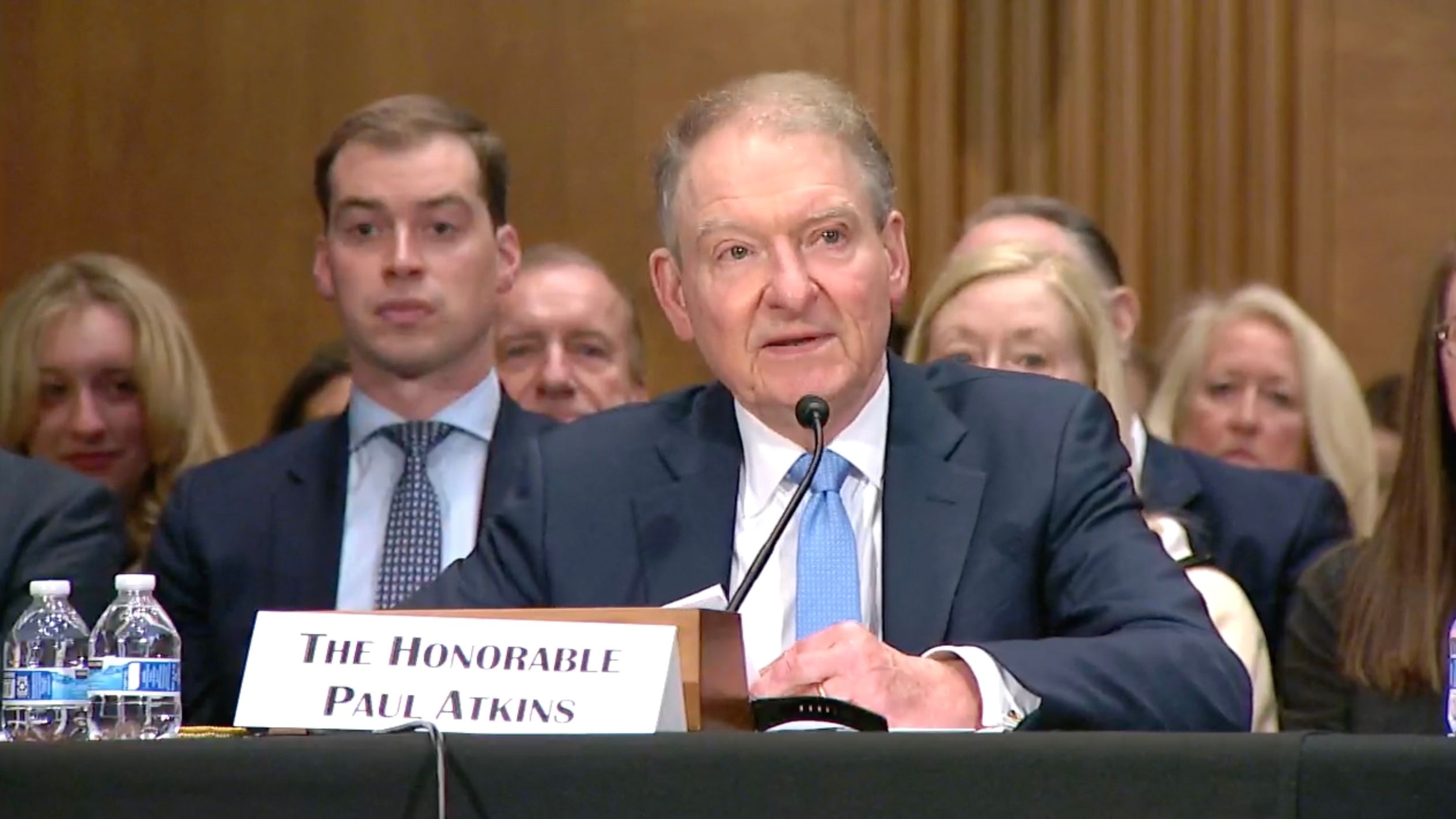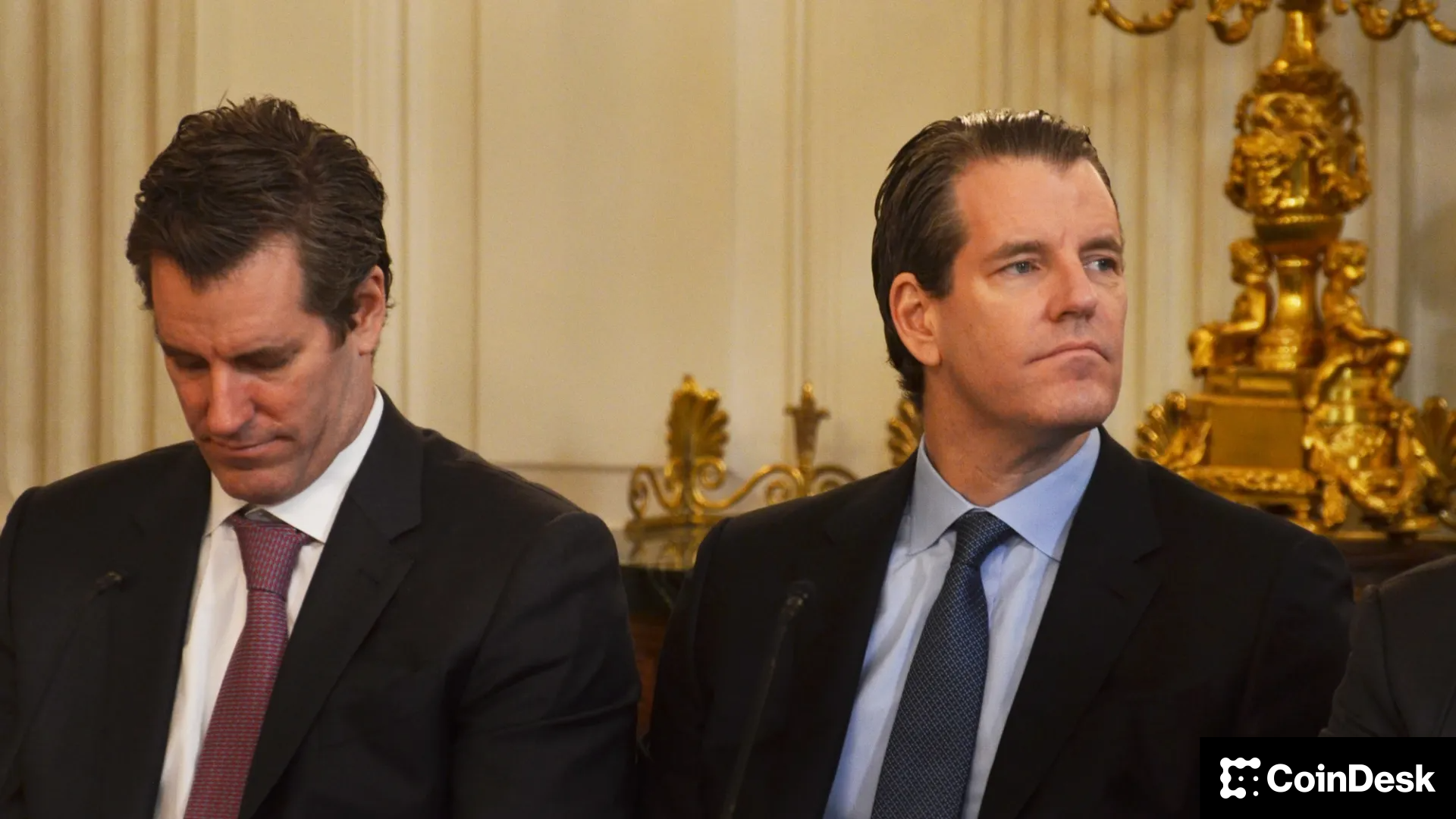Uncategorized
Trump’s Pick to Run SEC Paul Atkins Promises New Crypto Stance, Gets Few Questions

Paul Atkins, the former member of the U.S. Securities and Exchange Commission that President Donald Trump has tapped to run the agency, assured a different direction for the agency on crypto from the last four years, though he wasn’t pressed with big-picture digital assets questions during a Thursday confirmation hearing.
Now that Trump has secured the cabinet-level echelon of his government, the White House is working on shepherding top agency chiefs through the Senate confirmation process. While many of the crypto headlines are coming from the administration and Congress these days, those running the regulatory agencies will ultimately be the ones writing the regulations the industry will have to conform with.
Atkins is seeking to be the successor of ex-Chair Gary Gensler, whose years at the agency established him as the digital assets sector’s most prominent nemesis. But Trump’s nominee is already positioning himself in stark contrast to Gensler, who criticized the industry’s history with swindlers and contended that current securities law was sufficient to treat much of the space as if it were in active violation of registration requirements.
«A top priority of my chairmanship will be to work with my fellow commissioners and Congress to provide a firm regulatory foundation for digital assets through a rational, coherent, and principled approach,» Atkins said in his prepared testimony for Thursday.
Senator Tim Scott, the South Carolina Republican who chairs the committee, said Atkins will «provide long-overdue clarity for digital assets.»
But even before the hearing began, Atkins was being slammed by Senator Elizabether Warren, the Massachusetts lawmaker who is the committee’s ranking Democrat, who registered doubt about his ability to be impartial to the digital assets sector he’s served as an adviser.
At the hearing table beside Atkins, Gould made his case for taking over the Office of the Comptroller of the Currency, the regulator for national banks. The OCC has been a significant player in the digital assets sector’s campaign against U.S. banking oversight that’s pressured banks to keep the industry at an arm’s length. Crypto firms and insiders have struggled to maintain banking relationships and have argued that the regulators authored that «debanking» strain.
The first question to Gould was on that situation, with Scott asking whether he’d commit to reversing that previous stance, to which Gould responded, «absolutely.»
For the crypto industry, Atkins’ responses on crypto matters are potentially more urgent. But he wasn’t questioned on his views about next steps for cryptocurrency oversight, nor about the legislative efforts poised to remake U.S. crypto policy.
SBF
At one point, Republican Senator John Kennedy of Louisiana raised the topic of former FTX CEO Sam Bankman-Fried, who he said looks like a «fourth runner-up in a John Belushi lookalike contest,» and asked Atkins whether the SEC appropriately looked into SBF’s parents for their involvement in his fraudulent activities.
«I look forward to getting to the SEC to find out what happened,» Atkins said. «Like you, I’m concerned about those reports.»
But Kennedy took it further, suggesting a lack of accountability that signals «two standards for law and punishment» in the U.S.
«I don’t think the SEC has done a damn thing,» Kennedy said. «They’re crooks!» he shouted. «And I expect the SEC to do something about it.»
Few other senators delved into wider crypto matters, and those that may have been expected to, such as Senator Cynthia Lummis, weren’t present. The hearing only lasted two hours and included four nominees for various offices, causing some Democrats to lament that this wasn’t enough time to speak with each person.
Atkins’ most difficult moments revolved around his tenure as an SEC commissioner in the run-up to the 2008 meltdown and the agency’s failings in policing the mortgage securities that contributed to that crisis. Atkins deflected the primary responsibility of the crisis as belonging to mortgage giants Fannie Mae and Freddie Mac.
The next step in the confirmation process is for the committee to vote on the nominees and forward them for potential approval by the overall Senate.
Business
Crypto Trading Firm Keyrock Buys Luxembourg’s Turing Capital in Asset Management Push

Crypto trading firm Keyrock said it’s expanding into asset and wealth management by acquiring Turing Capital, a Luxembourg-registered alternative investment fund manager.
The deal, announced on Tuesday, marks the launch of Keyrock’s Asset and Wealth Management division, a new business unit dedicated to institutional clients and private investors.
Keyrock, founded in Brussels, Belgium and best known for its work in market making, options and OTC trading, said it will fold Turing Capital’s investment strategies and Luxembourg fund management structure into its wider platform. The division will be led by Turing Capital co-founder Jorge Schnura, who joins Keyrock’s executive committee as president of the unit.
The company said the expansion will allow it to provide services across the full lifecycle of digital assets, from liquidity provision to long-term investment strategies. «In the near future, all assets will live onchain,» Schnura said, noting that the merger positions the group to capture opportunities as traditional financial products migrate to blockchain rails.
Keyrock has also applied for regulatory approval under the EU’s crypto framework MiCA through a filing with Liechtenstein’s financial regulator. If approved, the firm plans to offer portfolio management and advisory services, aiming to compete directly with traditional asset managers as well as crypto-native players.
«Today’s launch sets the stage for our longer-term ambition: bringing asset management on-chain in a way that truly meets institutional standards,» Keyrock CSO Juan David Mendieta said in a statement.
Read more: Stablecoin Payments Projected to Top $1T Annually by 2030, Market Maker Keyrock Says
Business
Crypto Trading Firm Keyrock Buys Luxembourg’s Turing Capital in Asset Management Push

Crypto trading firm Keyrock said it’s expanding into asset and wealth management by acquiring Turing Capital, a Luxembourg-registered alternative investment fund manager.
The deal, announced on Tuesday, marks the launch of Keyrock’s Asset and Wealth Management division, a new business unit dedicated to institutional clients and private investors.
Keyrock, founded in Brussels, Belgium and best known for its work in market making, options and OTC trading, said it will fold Turing Capital’s investment strategies and Luxembourg fund management structure into its wider platform. The division will be led by Turing Capital co-founder Jorge Schnura, who joins Keyrock’s executive committee as president of the unit.
The company said the expansion will allow it to provide services across the full lifecycle of digital assets, from liquidity provision to long-term investment strategies. «In the near future, all assets will live onchain,» Schnura said, noting that the merger positions the group to capture opportunities as traditional financial products migrate to blockchain rails.
Keyrock has also applied for regulatory approval under the EU’s crypto framework MiCA through a filing with Liechtenstein’s financial regulator. If approved, the firm plans to offer portfolio management and advisory services, aiming to compete directly with traditional asset managers as well as crypto-native players.
«Today’s launch sets the stage for our longer-term ambition: bringing asset management on-chain in a way that truly meets institutional standards,» Keyrock CSO Juan David Mendieta said in a statement.
Read more: Stablecoin Payments Projected to Top $1T Annually by 2030, Market Maker Keyrock Says
Business
Gemini Shares Slide 6%, Extending Post-IPO Slump to 24%

Gemini Space Station (GEMI), the crypto exchange founded by Cameron and Tyler Winklevoss, has seen its shares tumble by more than 20% since listing on the Nasdaq last Friday.
The stock is down around 6% on Tuesday, trading at $30.42, and has dropped nearly 24% over the past week. The sharp decline follows an initial surge after the company raised $425 million in its IPO, pricing shares at $28 and valuing the firm at $3.3 billion before trading began.
On its first day, GEMI spiked to $45.89 before closing at $32 — a 14% premium to its offer price. But since hitting that high, shares have plunged more than 34%, erasing most of the early enthusiasm from public market investors.
The broader crypto equity market has remained more stable. Coinbase (COIN), the largest U.S. crypto exchange, is flat over the past week. Robinhood (HOOD), which derives part of its revenue from crypto, is down 3%. Token issuer Circle (CRCL), on the other hand, is up 13% over the same period.
Part of the pressure on Gemini’s stock may stem from its financials. The company posted a $283 million net loss in the first half of 2025, following a $159 million loss in all of 2024. Despite raising fresh capital, the numbers suggest the business is still far from turning a profit.
Compass Point analyst Ed Engel noted that GEMI is currently trading at 26 times its annualized first-half revenue. That multiple — often used to gauge whether a stock is expensive — means investors are paying 26 dollars for every dollar the company is expected to generate in sales this year. For a loss-making company in a volatile sector, that’s a steep price, and could be fueling investor skepticism.
-

 Business11 месяцев ago
Business11 месяцев ago3 Ways to make your business presentation more relatable
-

 Fashion11 месяцев ago
Fashion11 месяцев agoAccording to Dior Couture, this taboo fashion accessory is back
-

 Entertainment11 месяцев ago
Entertainment11 месяцев ago10 Artists who retired from music and made a comeback
-

 Entertainment11 месяцев ago
Entertainment11 месяцев ago\’Better Call Saul\’ has been renewed for a fourth season
-

 Entertainment11 месяцев ago
Entertainment11 месяцев agoNew Season 8 Walking Dead trailer flashes forward in time
-

 Business11 месяцев ago
Business11 месяцев ago15 Habits that could be hurting your business relationships
-

 Entertainment11 месяцев ago
Entertainment11 месяцев agoMeet Superman\’s grandfather in new trailer for Krypton
-

 Entertainment11 месяцев ago
Entertainment11 месяцев agoDisney\’s live-action Aladdin finally finds its stars




